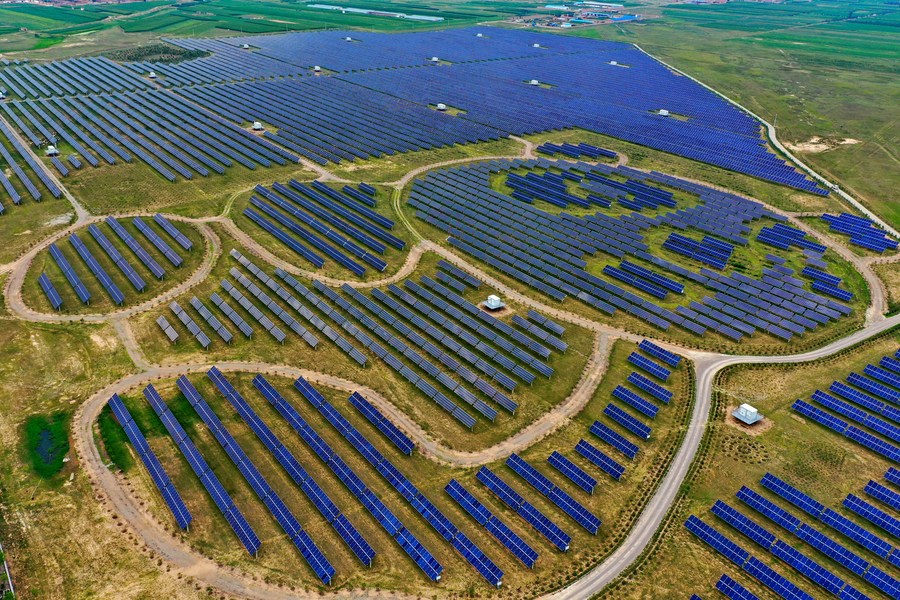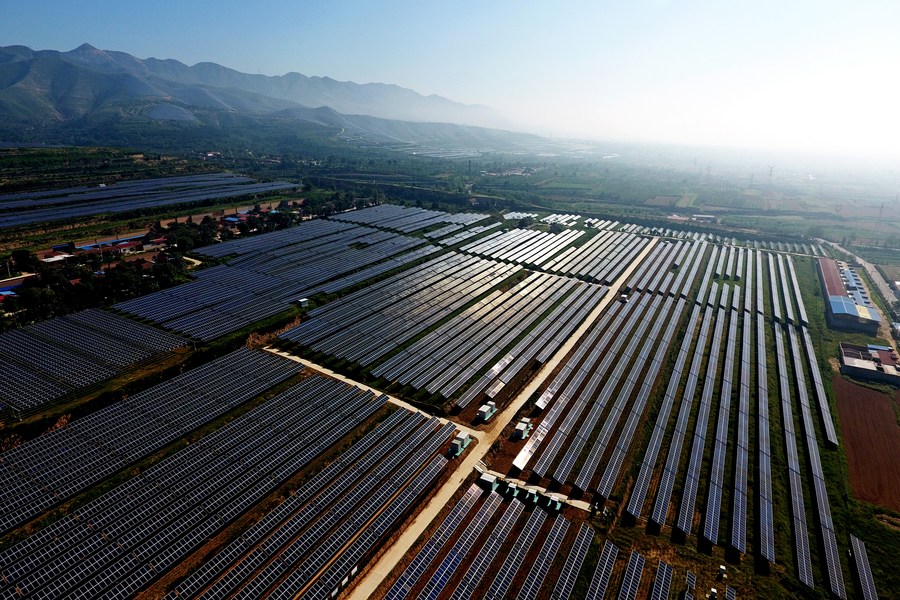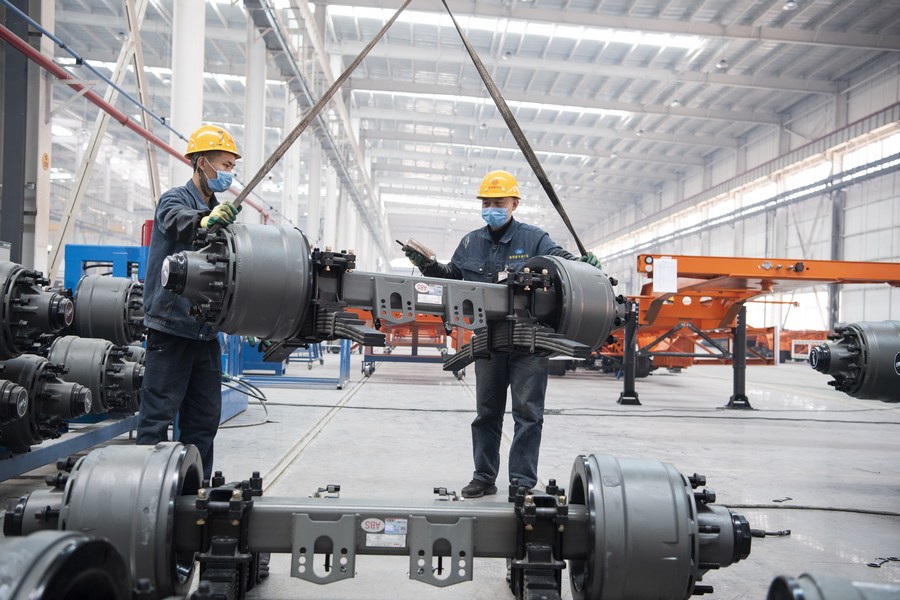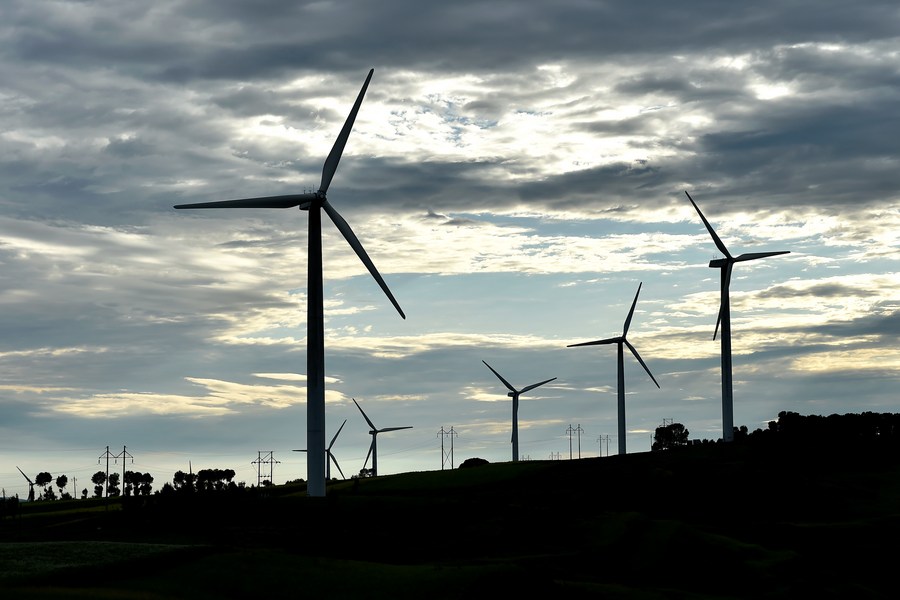-- Sweeping top-down efforts have been rolled out in China to attain its carbon dioxide emissions peak before 2030 and achieve carbon neutrality before 2060.
-- On Friday, north China's Shanxi Province hosted a global forum on energy low-carbon development, the first of its kind with such a high profile since the country introduced its grand carbon emission reduction goals.
-- Shanxi Province, once heavily reliant upon coal resources for economic growth, now is leading the way in the China's low-carbon energy revolution.
by Xinhua writers Yao Yulin, Xie Yuan and Lyu Mengqi
TAIYUAN, Sept. 4 (Xinhua) -- Orderly and steady progress has been made in China's green and low-carbon transition, as the world's largest energy producer and consumer has vowed to reach its carbon dioxide emissions peak before 2030 and achieve carbon neutrality before 2060.
On Friday, north China's coal-rich Shanxi Province hosted the Taiyuan Energy Low Carbon Development Forum in its capital city of Taiyuan, a major forum dedicated to contributing to achieving the grand goals.
Once heavily reliant upon its coal reserves to drive economic growth, Taiyuan has since taken the lead in piloting reforms to its energy structure.

Attendees take photos during the Taiyuan Energy Low Carbon Development Forum 2021 in Taiyuan, north China's Shanxi Province, Sept. 3, 2021. (Xinhua/Chai Ting)
START ANEW
Shanxi, China's major coal hub, has targeted slashing its carbon emissions as one of its leading measures to start a comprehensive energy revolution.
This year, a series of specific goals have been set in the province to complete a clean heating upgrade of its urban areas on the plains and an ultra-low emission transformation of steel complexes.
"The 14th Five-Year Plan period (2021-2025) is a critical period and golden opportunity to peak carbon emissions before 2030. Bringing the total amount of fossil energy consumption under control and taking action to replace fossil fuels with renewable energy alternatives are the major means," said Hou Bingrang, deputy director of the provincial energy administration.
Yet the province's low-carbon transition is no recent fad, as Shanxi has been striving to make the transformation happen for a decade.

Aerial photo taken on Aug. 3, 2021 shows a photovoltaic power station in Yunzhou District of Datong City, north China's Shanxi Province. (Xinhua/Cao Yang)
Cao Tianzhen, a 67-year-old sanitation worker in Linfen City of Shanxi, has seen the environmental changes with his own eyes during his nine years on the job.
"The city's air quality was so bad I couldn't open the windows no matter the season. But now the sooty smell in the air has gone and the sky is turning bluer and bluer. You can see people out and about getting exercise in the parks," Cao said.
More than a decade ago, Linfen was rebuked as one of the world's nine most polluted areas by some foreign media.
The improvement can be mainly attributed to China's top-level design and concrete implementation by local governments.
Since the 12th Five-Year Plan period (2011-2015), China has included the decline in carbon intensity as a binding indicator in the outline of its national economic and social development plan.
According to the Ministry of Ecology and Environment, from 2011 to 2020, China's carbon intensity dropped by 19.3 percent and 18.8 percent during the first and second five-year periods, respectively. The share of the total energy consumption held by coal declined from 72.4 percent in 2005 to 56.8 percent in 2020. Moreover, a survey conducted by the National Bureau of Statistics last year showed that the public's satisfaction with the ecological environment reached almost 90 percent.
"Such achievements are not easy at all for a country like China with coal-based resource endowments and a related energy structure," said Li Gao, head of the department for addressing climate change under the Ministry of Ecology and Environment.

Photo taken on Aug. 29, 2019 shows an aerial view of a photovoltaic power station in Ruicheng County, north China's Shanxi Province. (Xinhua/Zhan Yan)
MULTI-PRONGED MEASURES
China's commitment to severely curtailing its carbon emissions has gained considerable worldwide traction. Some foreign media have stated that effectively combating global climate change may rely on a substantial reduction in China's emissions, and they continue to focus on the latest developments in China's new energy sector, its electric vehicle industry as well as its crackdown on cryptocurrency mining.
For China, reaching carbon neutrality means undergoing the world's highest carbon emission intensity decline, and the country is expected to take the shortest time in human history to transit from peak carbon to ultimate carbon neutrality, according to Li.
In 2009, China proposed to lower its carbon intensity by 40 to 45 percent by the end of 2020 from 2005 levels, and it fulfilled the goal two years ahead of schedule, which means the country reduced its carbon dioxide emissions by 5.26 billion tonnes during the period.
Currently, local governments at all levels are on their way to helping push forward the country's green energy revolution.
Municipalities and provinces including Shanghai, Beijing and Jiangsu are striving to take the lead in achieving a carbon peak. Hangzhou, capital city of east China's Zhejiang Province, recently announced its to-do list of building itself into a pilot low-carbon city, while south China's Guangxi Zhuang Autonomous Region encouraged capable districts and cities to carry out carbon peaking practices and promote near-zero carbon emission demonstration projects.

People work at a workshop of a new energy vehicle enterprise at an industrial park in Jinzhong, north China's Shanxi Province, April 28, 2020. (Xinhua/Yang Chenguang)
In a new energy industrial park in Datong City, Shanxi Province, 22 logistics vehicles powered by hydrogen cells were being tested on roads.
"About 10 kg of hydrogen can power the vehicle to run about 400 km. It is also a new solution to solve the problem of starting fuel-powered vehicles in winter," said Bai Hongliang, deputy general manager of the Xinyan Hydrogen Energy Technology Company.
Meanwhile, the country is seeking possible clean energy alternatives. By 2030, the proportion of non-fossil energy in China's total energy consumption is expected to near 25 percent.

Photo taken on July 24, 2017 shows wind turbines at a wind farm in Youyu County, north China's Shanxi Province. (Xinhua/Zhan Yan)
Official data showed that China's new energy industry continued to expand in the first half of 2021, while the electricity generated by wind energy increased by 26.6 percent, taking the lead in terms of growth.
From January to July, a record high of around 1.48 million new energy vehicles produced by Chinese automobile manufacturers had been sold, tripling the number compared to the same period of the prior year.
Since China's national carbon market started trading about one month ago, about 7.02 million tonnes of emissions allowances had been transacted with an accumulative turnover of 355 million yuan (about 55 million U.S. dollars), Minister of Ecology and Environment Huang Runqiu told a press conference held on Aug. 18.
(Video reporters: Lyu Mengqi, Ma Zhiyi, Xie Yuan, Chen Zhihao; Video editor: Zhou Sa'ang) ■




